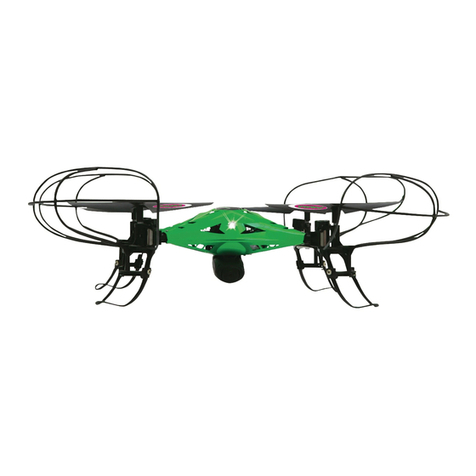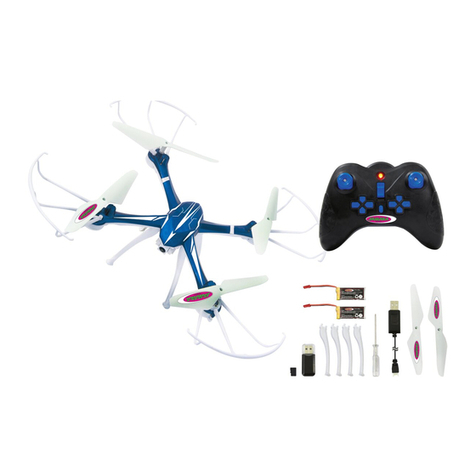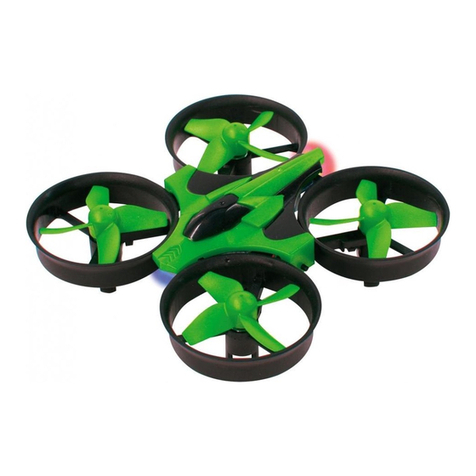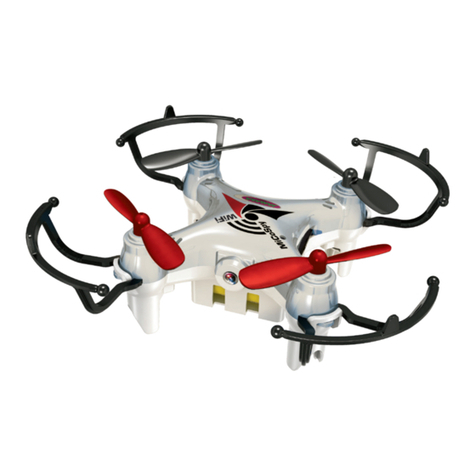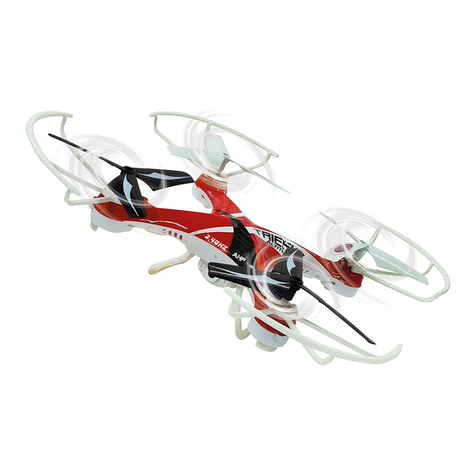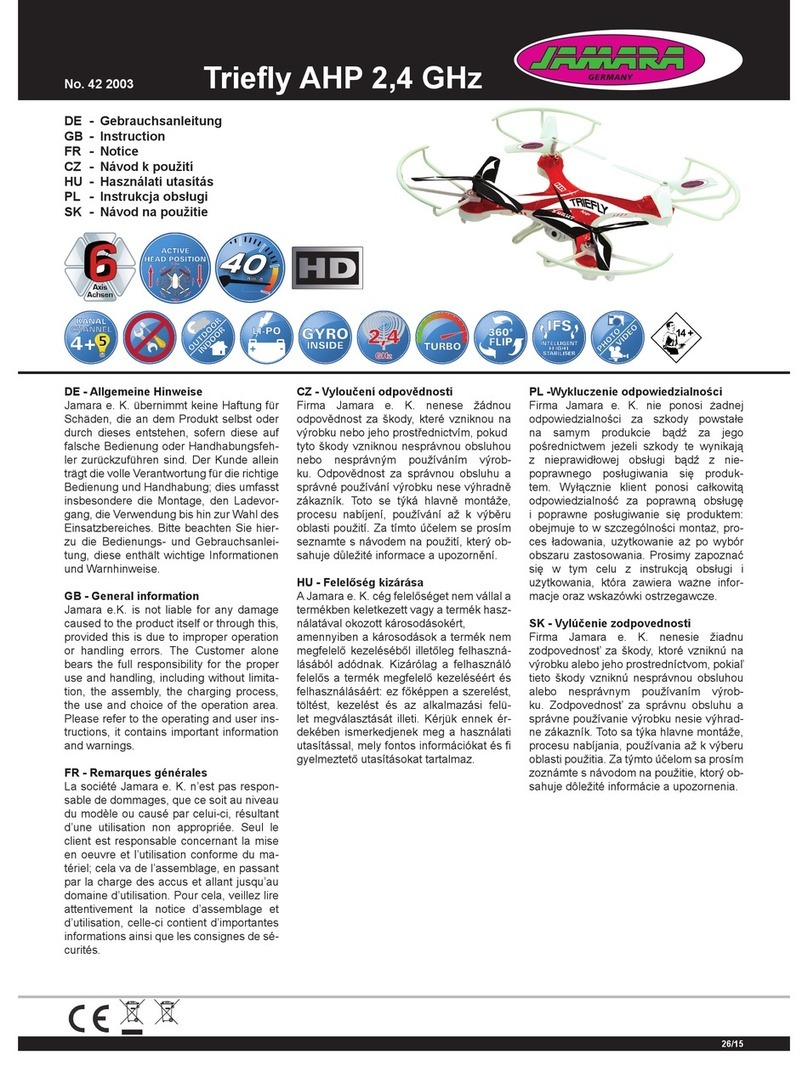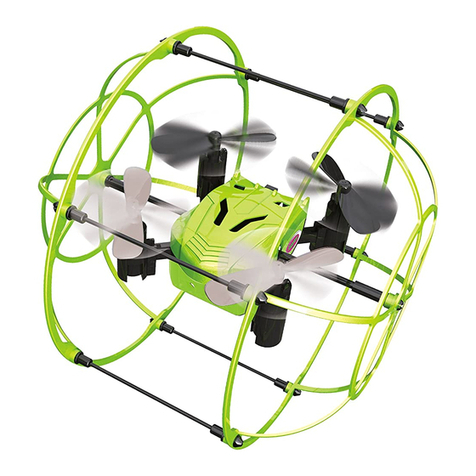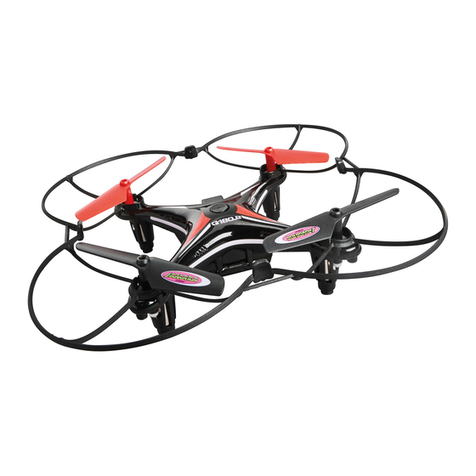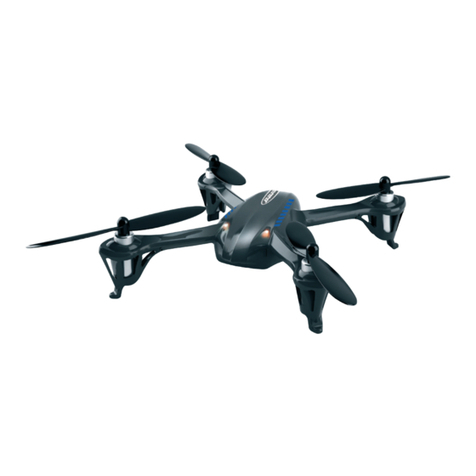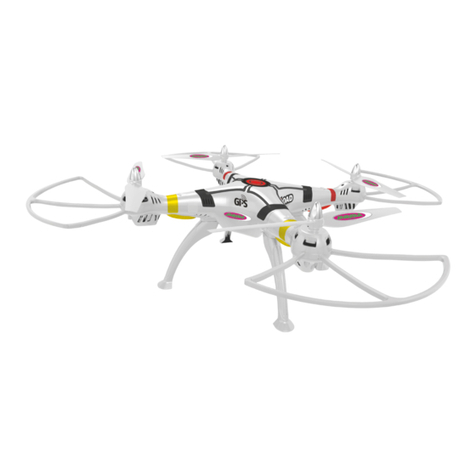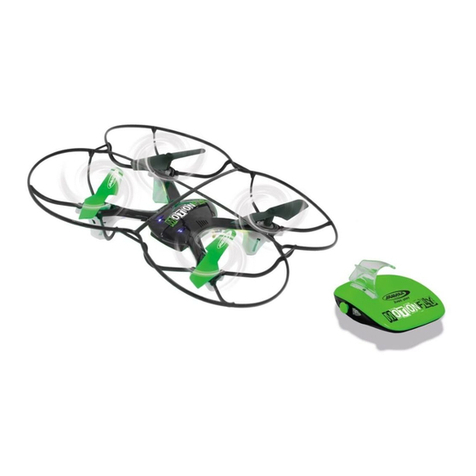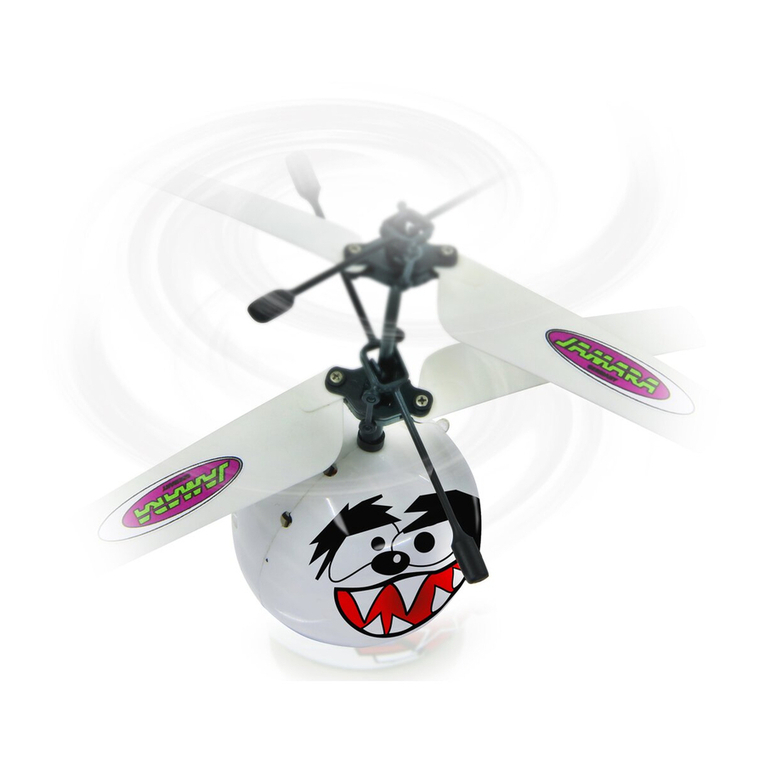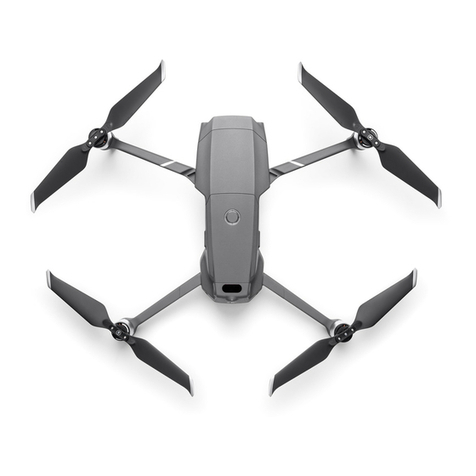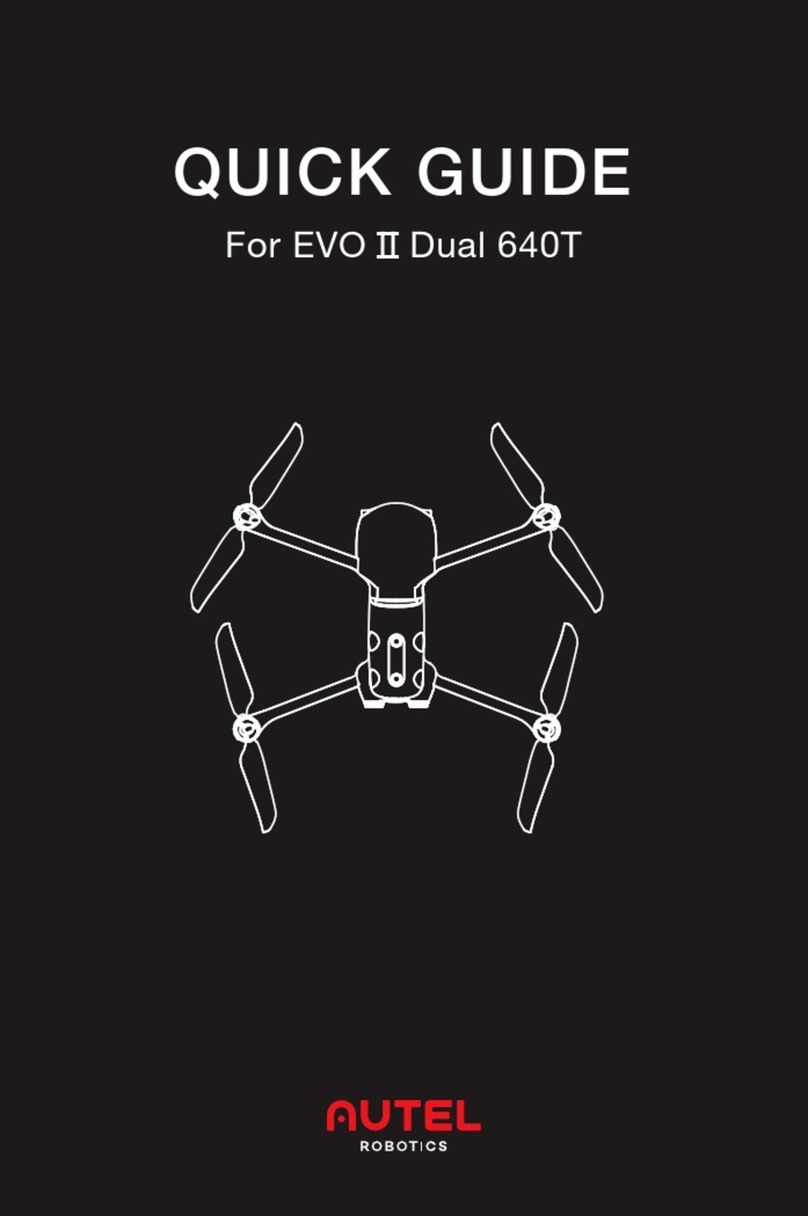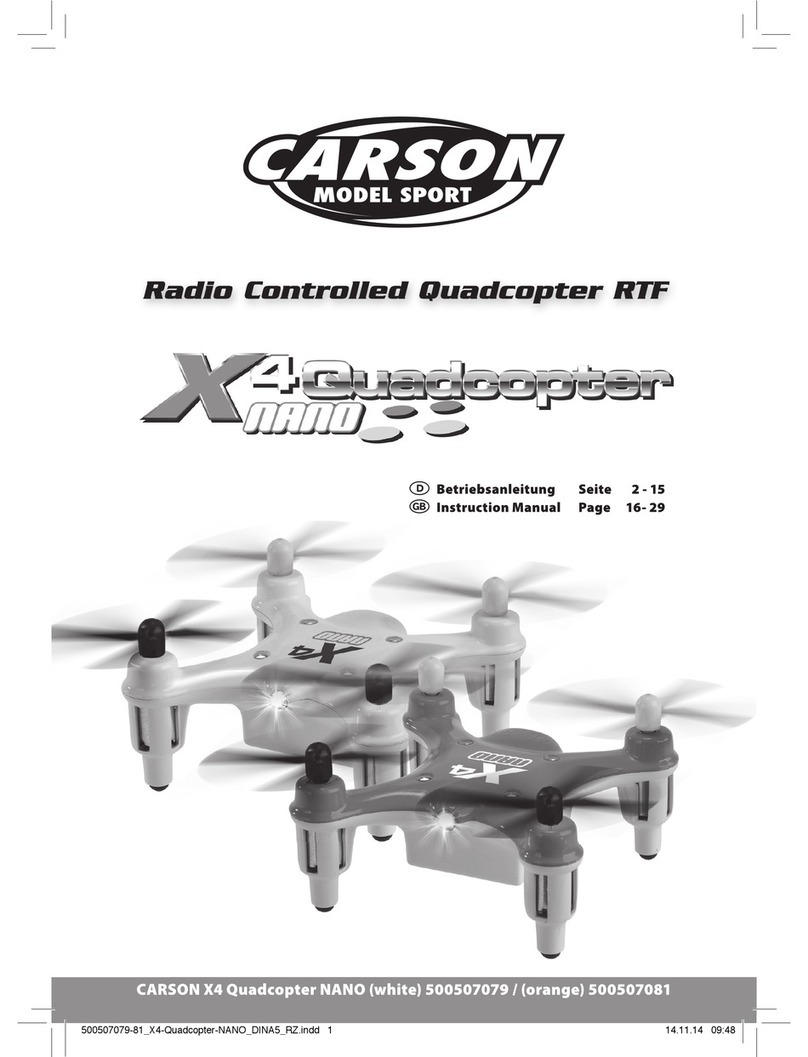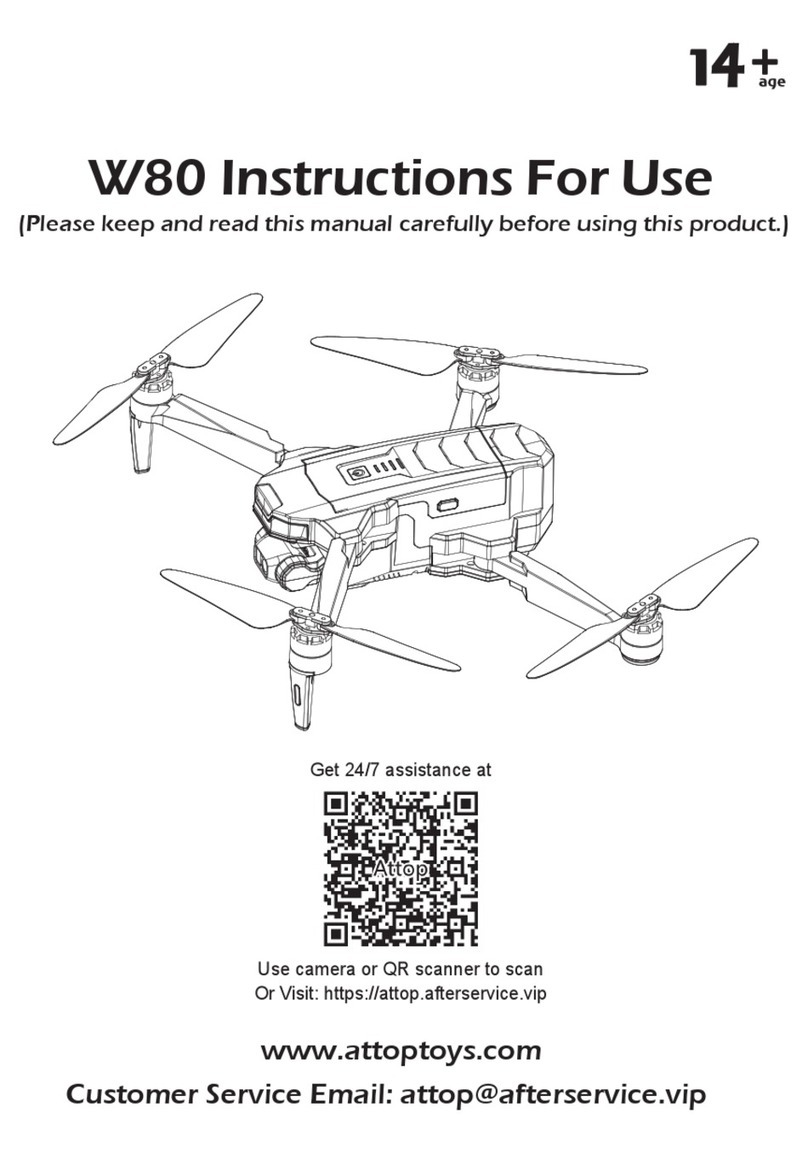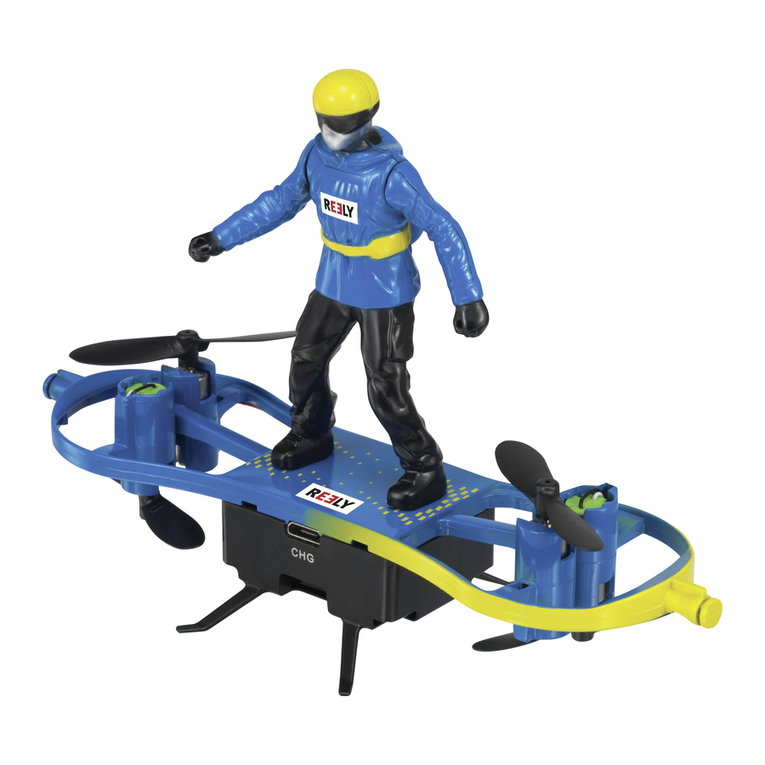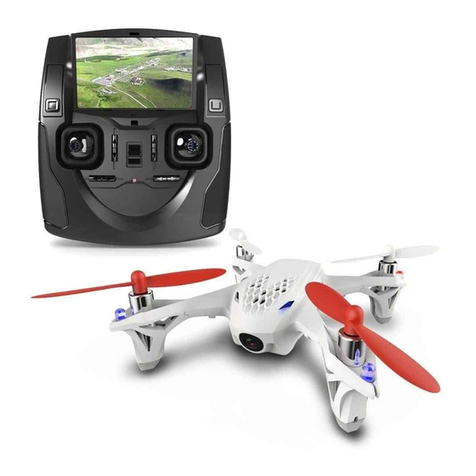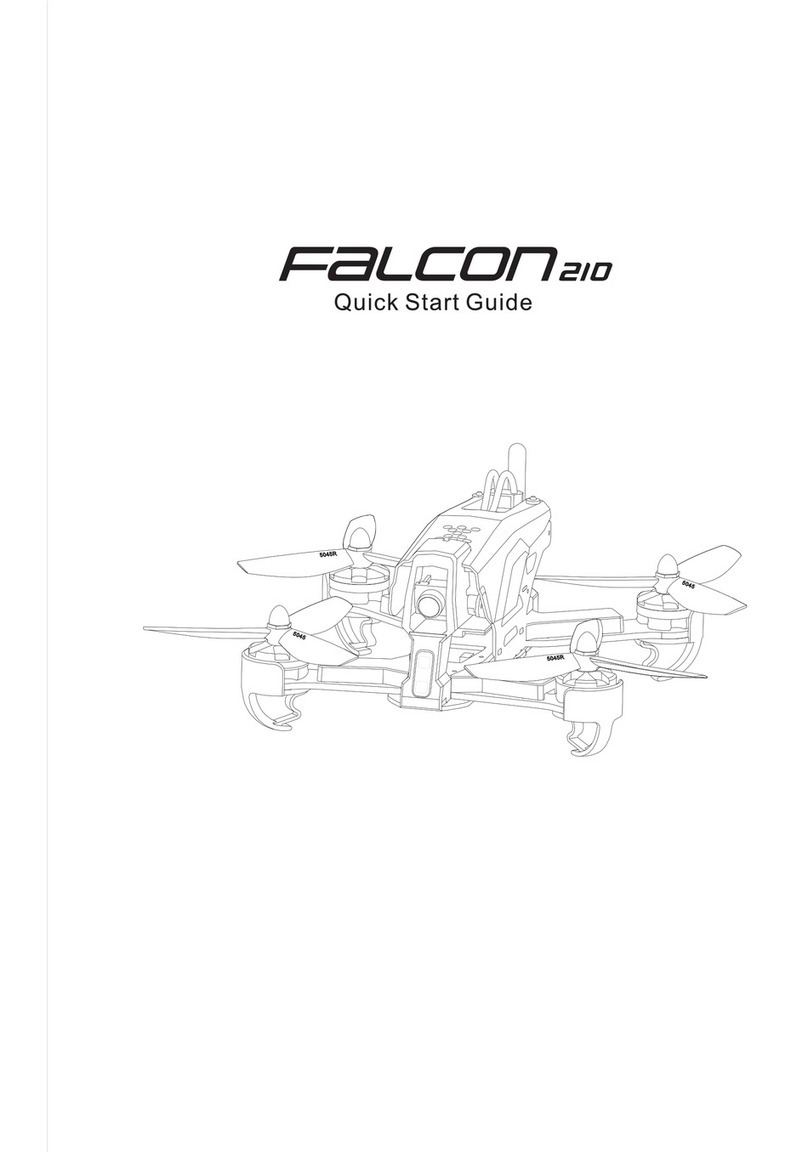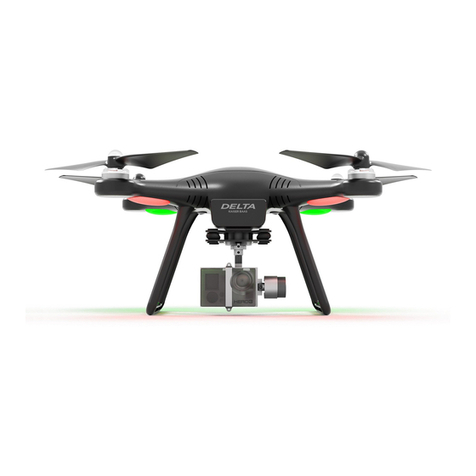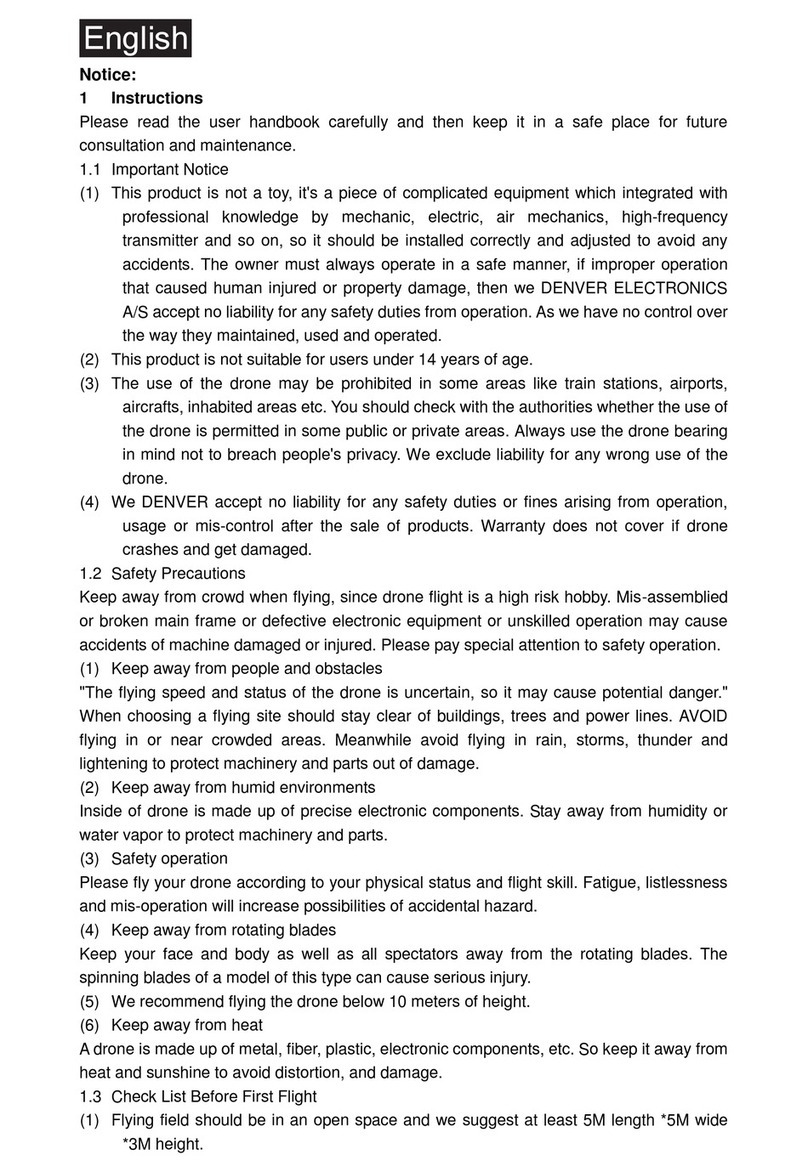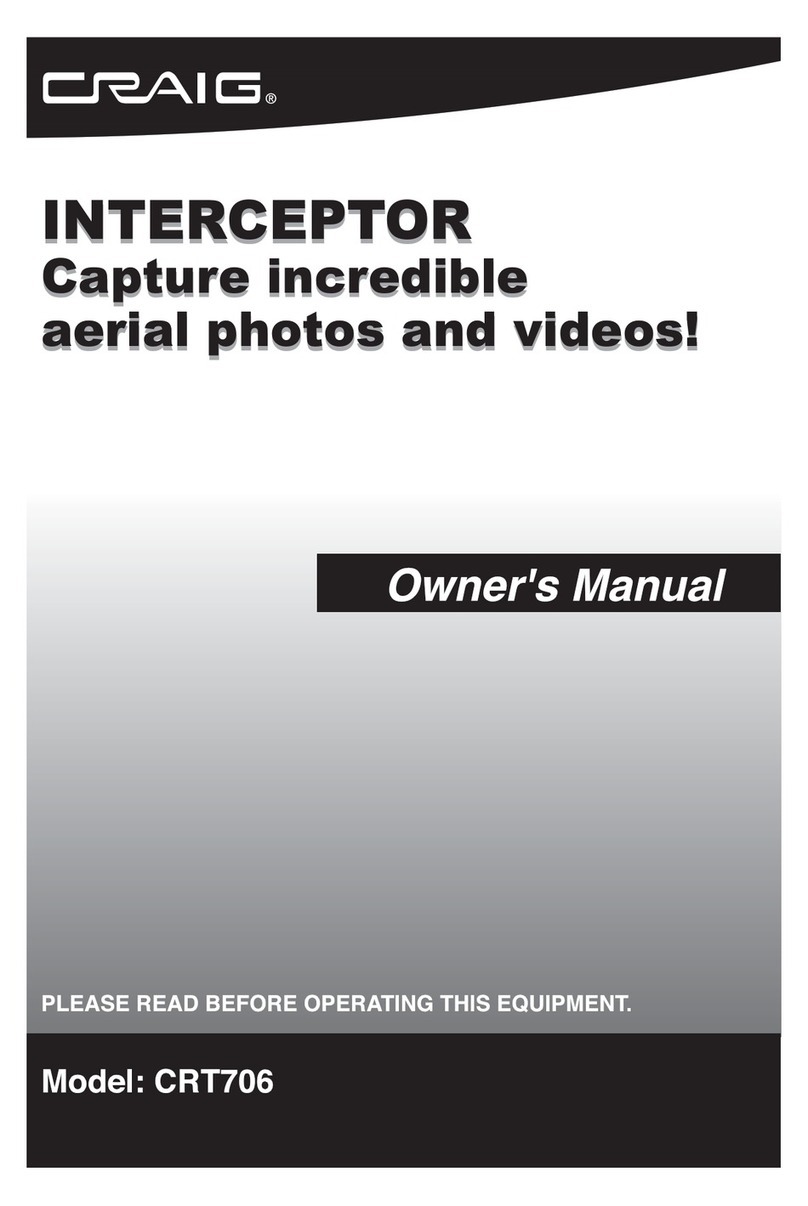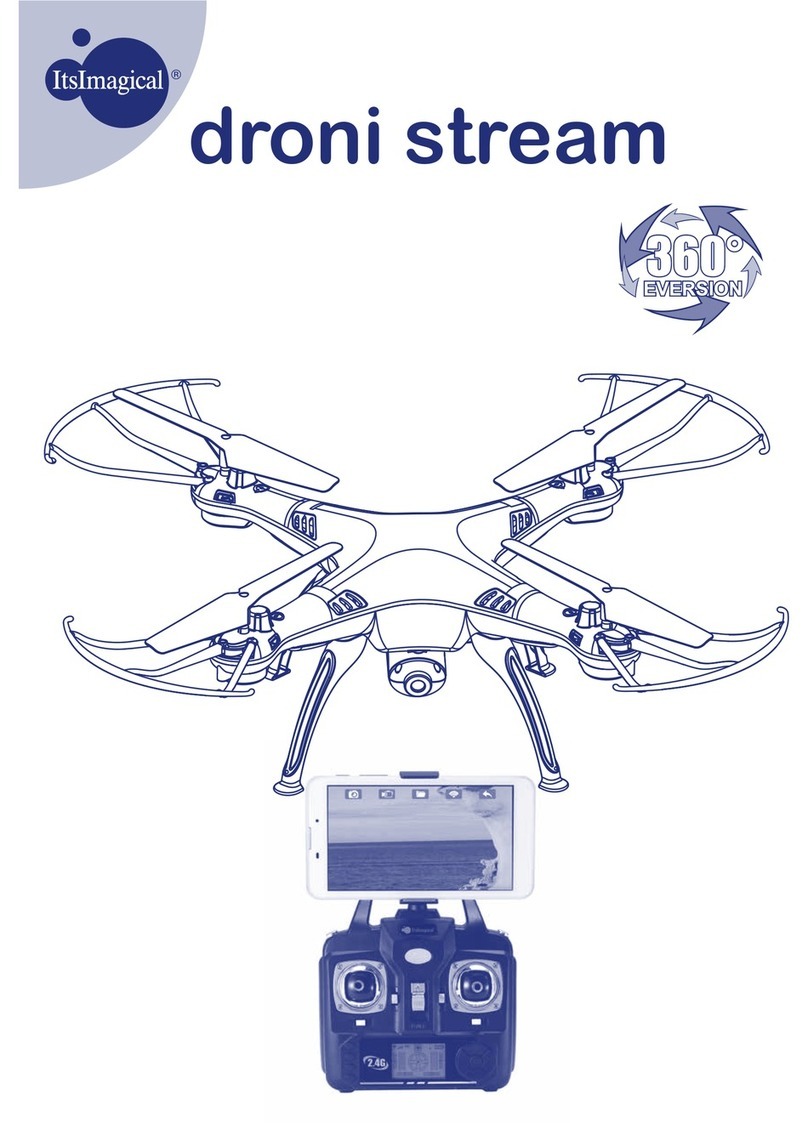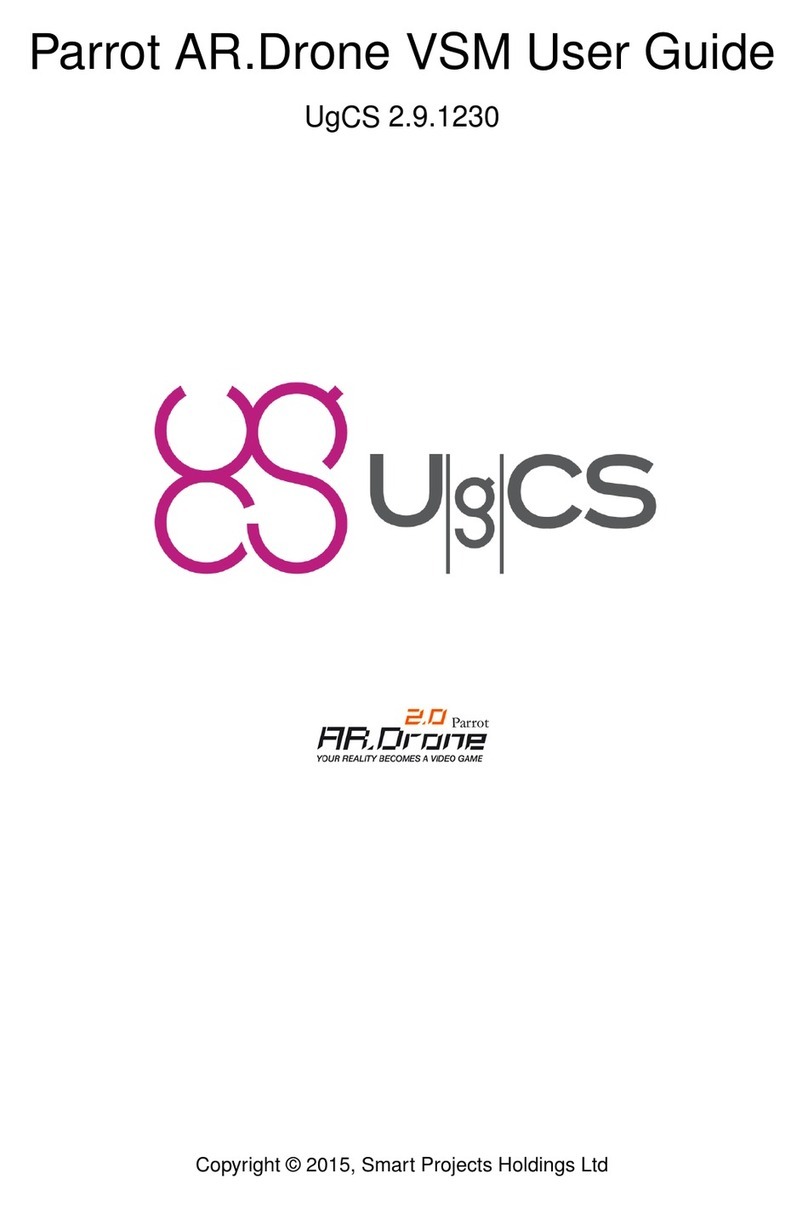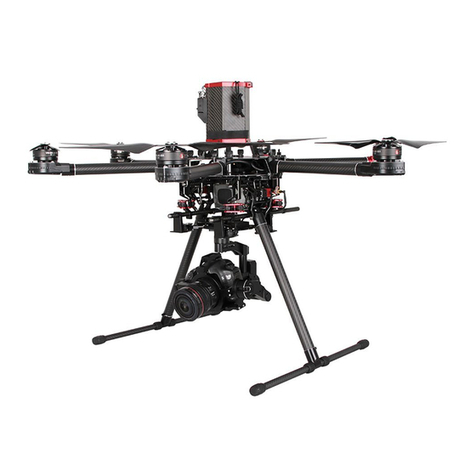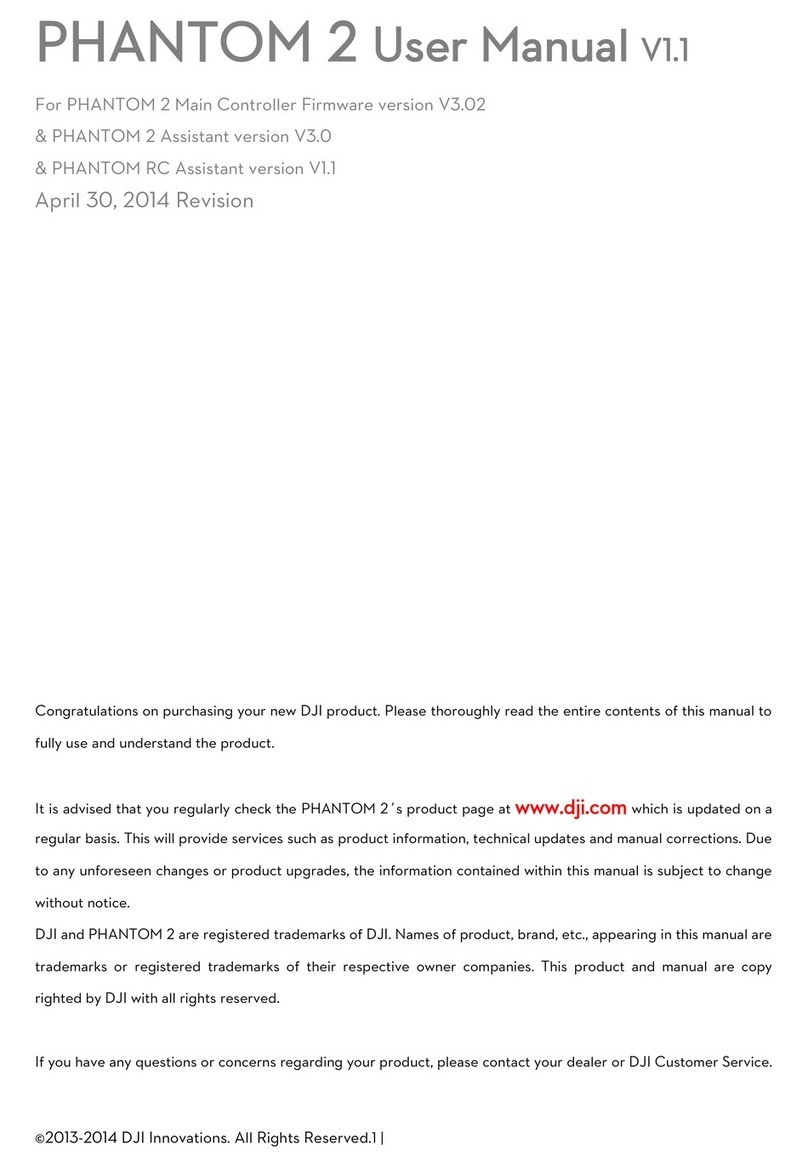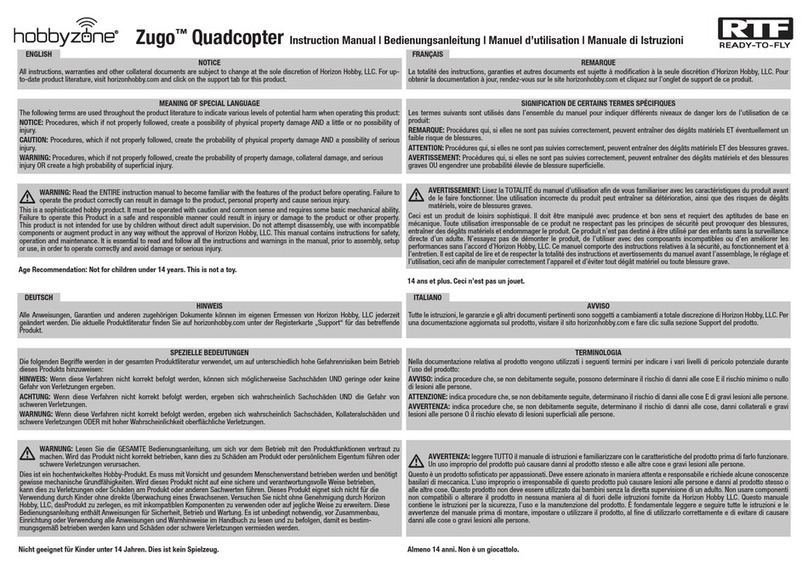
7
Kompassrichtung A
Flugrichtung
B
A
B
A
DE
Flyback- & Kompassfunktion:
Ihr Modell verfügt über eine Flyback- & Kompassfunktion. Das
heißt es ist in der Lage trotz einer Drehung in eine gewünschte
Richtung (der Rumpf zeigt nicht mehr in Flugrichtung) die ur-
sprüngliche Flugrichtung beizubehalten und halbautomatisch zu
Ihnenzurückzuiegen
Vorbereitung:
Zuerst sollten Sie sich Gedanken machen welche Richtung Sie
im Kompass des Models abspeichern wollen. Diese Richtung
wird beim aktivieren des Kompassmodus automatisch zur ab-
gespeicherten Flugrichtung. Möchten Sie also z.B. eine Stra-
ße entlang iegen und während dessen den Kompassmodus
verwenden wählen Sie die Richtung in die die Straße führt als
Grundrichtung für den Kompass. Wenn Sie nun das Modell im
Kompassmodus um die eigene Achse drehen lassen müssen
Sie sich keine Gedanken um die Flugrichtung an der Fernsteue-
rung machen. Wenn Sie den rechten Steuerknüppel nach vorne
drücken wird das Model in Richtung der Straße von ihnen weg-
iegen. Wenn Sie den rechten Steuerhebel zu sich herziehen
wird sich das Model der Straße entlang auf Sie zu bewegen.
Einrichtung des Flyback- & Kompassmodus:
Die Richtung in die das Modell beim ersten Start gerichtet ist
wird fest als Flyback bzw. Kompassrichtung abgespeichert.
Die Flyback- & Kompassfunktion kann im Flug durch drücken
der Kompass- und Flybacktaste aktiviert werden. Durch Blinken
der Led´s und Piepsen am Sender signalisiert das Modell das
es im Flyback- bzw. Kompassmodus ist. Das Modell folgt nun
unabhängig in welche Richtung der Rumpf des Models zeigt
der vorher einprogrammierten Kompassrichtung zurück in Ihre
Richtung (Flyback) bis Sie den rechten Steuerknüppel bewegen.
NachdemSiedenrechtenSteuerhebelbewegthabenbendet
sich das Modell autom. Im Kompassmodus. Während des Fly-
back- bzw. Kompassmodus müssen Sie weiterhin mit dem Gas-
hebel die Höhe des Modells kontrollieren.
GB - Compass & Flyback function
Your model has a Compass & Flyback function. This means it
is able to keep the desired yback direction even if it turns in
anotherdirectionduringight(thefrontdoesnotfacetheight
directionanymore)andiesbacktoyousemi-automatic.
First steps:
First of all you should choose the direction that you want to save
in the compass of the model. This direction is used by the com-
passasthe mainightdirection.Forexample,youyalonga
straight street and would like to use the compass mode; you
havetochoosethedirectionofthestreetasthemainightdirec-
tion. Now if you are using the compass mode to follow a moving
objectyoudonothavetowasteathoughtontheyingdirection
of the model. If you push the steering stick to the front the model
willyawayfromyou.Ifyoupullthesteeringsticktotheback
themodelwillybacktoyoufollowingthedirectionofthestreet
(Compass function).
Setting up the Compass & Flyback mode:
The direction in which the model is facing at the rst start is
saved as Compass direction.
The Compass & Flyback function can only be activated while the
model is in the air and by pressing the left direction button right
on your remote control. Indicated by the LEDs and sound from
the remote control the model is entering Compass & Flyback
mode. The model now automatically follows the programmed
compass direction in Flyback mode regardless in which direction
it is facing until you move the right control stick. After moving the
right control stick the model is automatically in Compass Mode
for you to control it on the compass direction. During use of the
Compass & Flyback function you need to control the altitude with
the throttle stick.
FR - Fonction boussole & yback
Votremodèleaunefonctionboussoleetyback.Ilpeutgarder
sa direction de vol initiale malgré une rotation dans une direction
souhaitée (le fuselage ne se trouve plus en direction du vol.) et
de façon semi-automatique revenir vers vous.
Préparation:
D’abordvousdevriezrééchiràladirectiondanslaquellevous
voulez sauvegarder la boussole du modèle. Cette direction
sera la nouvelle direction de vol automatiquement sauvegardée
quand vous activez la boussole. Si vous voulez voler le long de
la route et au même moment prendre le mode boussole, choisis-
sez la direction dans laquelle mène la route comme direction de
base pour la boussole. Quand vous tournez le modèle en mode
boussolesursonaxe,pourlmerunobjetquisetrouveàcôté
devotremodèle,ilnefautpasrééchirsurladirectiondevolàla
radiocommande. Si vous pressez le levier de commande droit an
avant, le modèle va s’envoler de vous en direction route. Quand
vous rapprochez le levier de commande à vous le modèle va se
bouger le long de la route vers vous.
Installation du mode compas et yback:
La direction dans laquelle le modèle est au départ placé
reste sauvegardée comme la direction compas ou yback.
Lafonctioncompasetybackpeutêtreactivéependantlevol.
Dirigez le modèle dans la direction souhaitée et appuyez le bou-
ton compas. Le clignotement des DEL vous signale que le mo-
dèlesetrouveenmodecompasetyback.Lemodèlesuitalors
la direction compas installée en avance, indépendamment de la
direction que montre le fuselage et retourne vers vous jusqu’à ce
que vous bougez le levier droit. Après que vous n’ayez bougé
le levier droit, le modèle se retrouve automatiquement en mode
boussole.Enmodeboussoleouyback,vousdevezcontinuer
par contrôler la hauteur du vol par le levier d’accélération.
IT - Funzione Flyback- & Bussola:
Il modello ha una funzione Flyback- & Bussola. Questo signi-
cacheéin grado nonostante unarotazionein una direzione
desiderata (La fusoliera non è in direzione di volo) mantenere
la direzione originale del volo e semiautomatico volare di nuovo
indietro verso di voi.
Preparazione:
Per primo deve aver una idea in quale direzione desidera memo-
rizzare la bussola del modello. Questa direzione quando attiva
il modo bussola e automaticamente la nuova direzione di volo.
Quindi, se volete per esempio volare lungo la strada e usare la
modalità bussola scelga la direzione in cui la strada conduce
come la direzione di base della bussola. Se ora deve far ruo-
tare il modello attorno al proprio asse in modalità bussola non
ce bisogno di preoccuparsi per la direzione di volo sulla radio.
Se preme la leva di controllo destro in avanti il modello volerà
in direzione della strada via da voi. Se preme la leva di control-
lo destro verso di voi il modello volerà in direzione della strada
verso di voi.
Installazione della Modalità Flyback- & Bussola:
La direzzione in cui il modello é diretto, viene memorizzatoa
in modo permanente come Flyback ossia direzione bussola.
La funzione Flyback- & Bussola puo essere attivato durante il
volo attraverso premendo il pulsante in altro a destra (Bussola- e
Pulsante Flyback). Dal lampeggio del LED e segnale acustico
viene segnalato che il modello é in Flyback- ossia modalità bus-
sola. Il modello segue ora la direzione indipendente, in cui la
fusoliera del modello indica di come era stata programmata la
direzionebussolaindietroversodiLei(Flyback)nchemuovera
la leva di controllo destra. Dopo aver spostato la leva di controllo
destra il modello si trova automaticamente nella modalitá bus-
sola. Durante la modalità Flyback- ossia bussola é necessario
continuare a controllare l’altezza del modello attraverso la leva
del gas.
ES - Función Flyback- & Brújula:
SumodelotieneunafunciónFlyback-&Brújula.Estosignica
que no obstante un giro en una dirección deseada (El fuselaje no
está en la dirección de vuelo) mantiene la dirección original de
vuelo y semiautomático vola de nuevo hacia Usted.
Preparación:
Al primero usted debe tener una idea en que dirección desea
almacenar en la brújula del modelo. Esta dirección cuando se
activa el modo de brújula es automáticamente la nueva dirección
del vuelo. Así que si por ejemplo quieres volar a lo largo de una
calle y utilizar el modo de brújula selecciona la dirección en la
que el camino conduce como la dirección básica de la brújula.
Si ahora hace girar el modelo alrededor de su propio eje en el
modo de brújula no tiene que preocuparse de la dirección de
vuelo en la emisora. Si presiona la palanca de control derecha
hacia adelante el modelo va a volar en la dirección de la calle
lejos de usted. Si tire la planca de control derecha hacia usted el
modelo va a volar en la dirección de la calle hacia usted.
Instalación del modo Flyback- & Brújula:
La dirección en la que el modelo se dirige vien almacena-
do permanentemente como Flyback o bien dirección de la
brújula.
La función Flyback- & Brújula se puede activar durante el vuelo
atravez pulsar el botón en la parte superior derecha (botón Brú-
jula- y Flyback). Por intermitente de los LEDs y pitidos en la emi-
sora le senalas que el modelo esta en el mode Flyback o bien
Brújula. El modelo ahora sigue la dirección independiente en el
que el fuselaje del modelo muestra cómo estaba programado
anteriormente moverse lentamente hacia usted (Flyback) hasta
que vas a mover la palanca de control derecho. Después de
mover la palanca de control de la derecha el modelo esta en
automático en el modo brújula. Durante el modo Flyback- o bien
Brújula, se debe continuar a controlar la altura de su modelo con
la palanca de gas.

